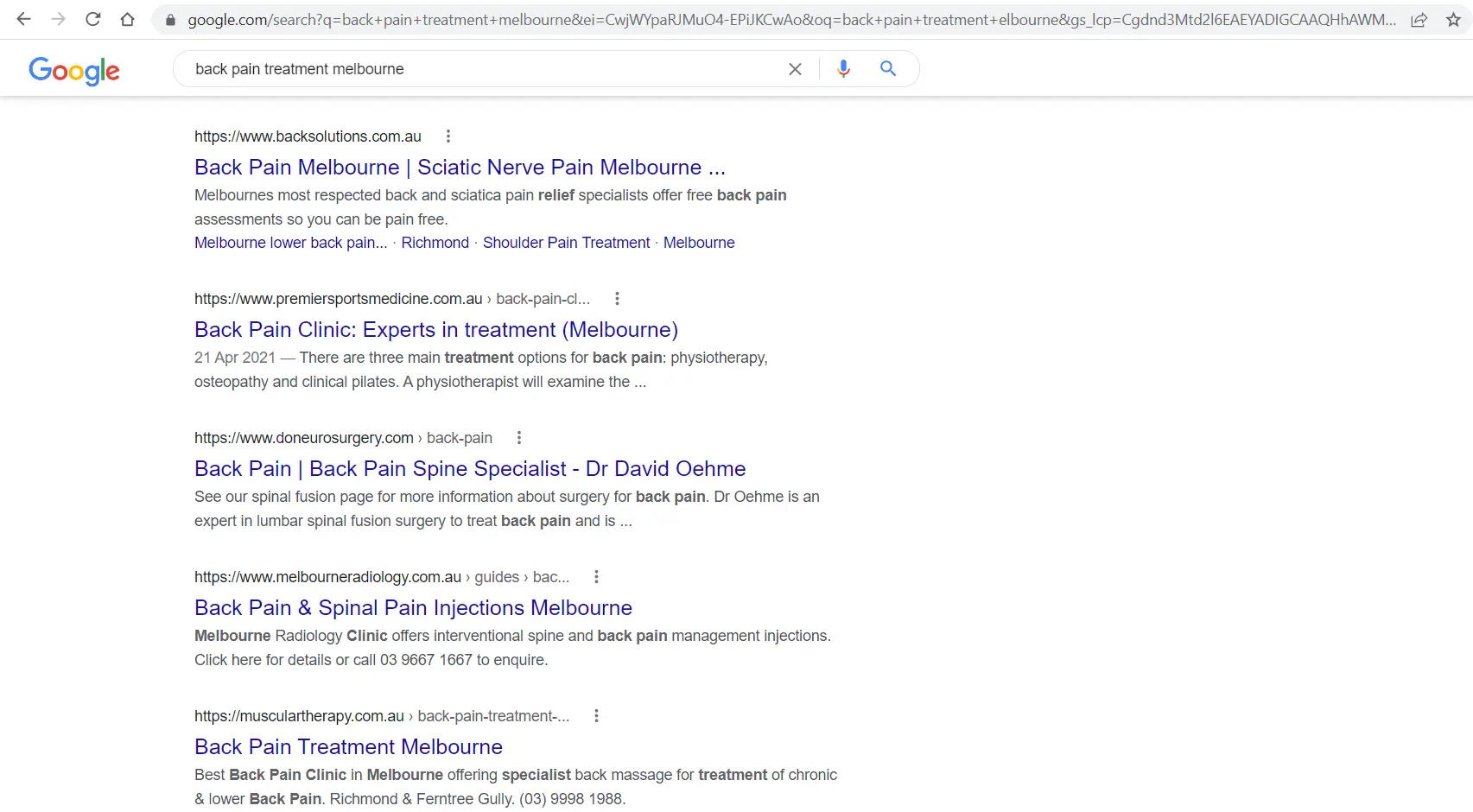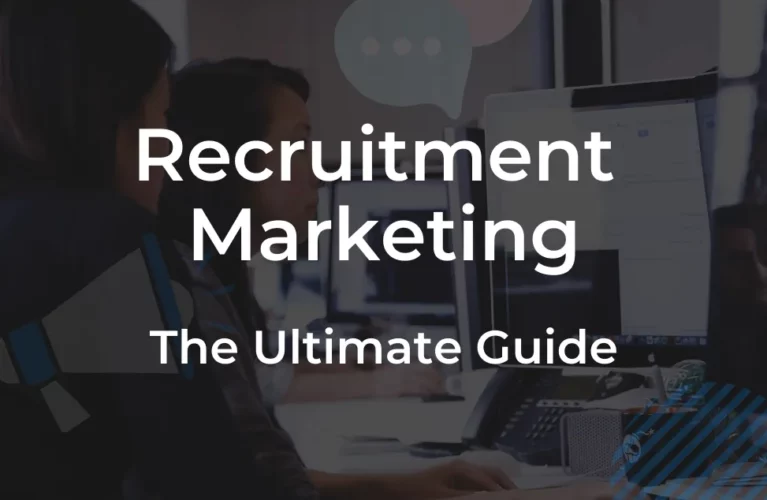It goes without saying that allied health practitioners play a crucial role in our overall healthcare system. By working alongside medical professionals in the identification, evaluation, prevention and treatment of various illnesses and conditions, you’re making an indispensable contribution to the quality of healthcare that’s available to the average Australian. And yet, without good marketing, your services will go unnoticed.
Did you know that 78% of Australian adults use the internet to find health-related information? (Australian Institute of Health & Welfare). According to Google, one in 20 online searches within Australia are health related.
So, the question is: where does your allied health practice rank in these searches? What can you do to make your allied healthcare business visible online, and to actively target your desired audience? As with any effective strategy, it starts with a well thought-out plan.
The Planning Stage

Image Source: Unsplash
When laying the foundations for your allied health business’s digital marketing strategy, you must first think introspectively. How do you want your practice to serve your community? Are you looking to expand your client base, or grow your practice into multiple clinics across several locations? Is your goal to branch into TeleHealth services to see more patients each day, or do you simply wish to establish yourself as Melbourne’s leading acupuncturist?
Your motives will inform your marketing strategy, so be specific.
Then there’s your unique selling point; something which every allied health business needs. What sets your practice apart from your competitors? Only you can answer this.
Finally, who is your target audience? And to be clear, the answer isn’t “18 – 65-year-olds with postural problems”, or “athletes recovering from a sports-related injury”. Dig deeper. What are you potential patients’ (metaphorical) pain points? What kinds of occupations and lifestyles do they have? Which treatment methods have they already tried and been dissatisfied with?
By finding the answers to these questions, you create profiles of who your target clients are, and this paves the way for developing a tailored marketing strategy that directly appeals to your potential customers.
From here on in, your target audience informs all your decision-making in regards to SEO content, paid ads placement, value-added marketing and your other allied health digital marketing techniques.
Okay, now that you know who your target clientele is, it’s time to make sure they can find you.
The Implementation Stage

SEO
SEO = search engine optimisation. Thus, creating SEO content means publishing information online that is optimised for Google or Bing searches regarding a certain topic.
Let’s say you’re a chiropractor with your own clinic in Melbourne CBD. When someone in or near the city searches “chiropractor near me”, “back pain treatment Melbourne” or “treatment for tennis elbow”, you want your business to pop up front and centre, right? There are several things you need to do in co-ordination to make this happen, but the first step is to create SEO content for attracting organic traffic.
You’ll want to create a series of webpages on your allied health business website; each one optimised for a different service that you provide, or condition that you treat. Make a list of all the services your practice offers, and then use an online keyword planner tool to find out what people are typing into search engines when they’re seeking that form of treatment.
You’ll probably end up with a list that looks something like this:
- BACK PAIN – back pain treatment Melbourne, chiropractor near me, spinal manipulation
- KNEE PAIN – who to see for knee pain in Melbourne, knee treatment clinic Melbourne
- SCIATICA – sciatica treatment near me, how to fix sciatica
- …and so on.
Write a few hundred words on each individual treatment, speaking to your audience about how you treat these conditions. Use your keywords in the headings, and once or twice in the body of the content. Publish these descriptions on their own dedicated “services” pages, and try to link them to each other organically in the text.
Once completed, you’ve laid the groundwork for what will become an increasingly strengthened network of SEO content – more on this in a moment!
What is an SEO audit?
At this point, it’s worth mentioning that your website content – be it text, imagery, videos or otherwise – is only one aspect of your SEO status. Search engines like Google might not display your practice’s website in online searches if it deems your site as difficult to navigate, poorly indexed, containing broken links, being too slow to load and other criteria.
An SEO audit evaluates your entire website and identifies all the things that might be negatively impacting your search engine rankings. The process involves:
- Benchmark your rankings and understand your competitors
- Check for duplicate versions of your site in Google’s Index
- Check your website’s indexed URL’s
- Check for manual actions
- Analyse your site speed
- Confirm that your site is using HTTPS
- Check for mobile friendliness issues
- Assess your website’s page experience
- Audit your technical on-page SEO
- Identify broken internal links
- Assess your sitemap for efficiency
- Evaluate redirects
- Identify duplicate content and thin content issues
- Identify orphan pages
- Run an audit on backlinks
Confused? Essentially, what all this means is that search engines like Google and Bing want to make sure that when someone in Brisbane searches “physiotherapist near me” or “best treatments for stiff neck”, they are only seeing credible results from reliable sources of information.
If your website is slow and clunky, poorly optimised for viewing on mobile devices, with lots of links that don’t go anywhere, these search engines are less likely to consider you a “quality source of information”. Consequently, other local physiotherapists with “healthier” websites will outrank you online.
In short, SEO audits are a tedious but necessary task in the early stages of your allied health business’s digital marketing efforts. Once your website is healthy and optimised, it’s time to start showing potential clients and search engines alike that you’re a trustworthy expert in your chosen field of allied healthcare!
Value-Added Marketing

Image Source: Eastern Therapies
There’s often a misconception that the make-up artist who constantly sends out make-up tutorials and cosmetics masterclasses to their client base, ultimately makes themselves redundant. Or a landscaping company that puts out content around how to create your very own private garden oasis in your backyard. Who needs a make-up artist or a landscaper when they’ve taught you how to do it yourself?
In reality though, this attitude couldn’t be further from the truth. By offering up free, high quality content in the industry that you’re an expert in, you establish yourself as an authority on the subject and provide customers with more than they were expecting – this is what value-added marketing is all about.
There’s a reason why IKEA tirelessly creates content about everything from sustainable living and how to make a kokedama, to making the most of multi-functional spaces, interior design’s influence on our mental health and a myriad of other subjects.
Instead of just appearing in Google/Bing searches for things like “buy furniture online”, “minimalist furniture for sale” and “affordable furniture near me”, IKEA can reach its target audience even when they’re researching arts and crafts, tiny home ideas, and tips for living a more sustainable lifestyle.
So, how does this relate to your allied health practice?
Conversions can be a slow burn
Remember, good allied health digital marketing isn’t just about targeting the person looking for treatment today. It’s also about forming (and nurturing) relationships with people who may seek treatment in the future. And when they do, your practice will be their obvious choice. This is where touchpoints come into play.
Imagine this scenario…
Flu season is coming up, and Sandra’s got a big project at work that’s due in a few weeks. She remembers that the flu really knocked her off her feet last year, and she can’t afford to have that happen right now, so she Googles things you can do to strengthen your immune system. A blog post from a local natural health clinic discusses the benefits of acupuncture, and how it triggers the brain into bolstering your immune system against germs and viruses.
Sandra decides to book an acupuncture appointment, she doesn’t get the flu, and she submits her work assignment on time. Having clicked through and read the acupuncture article a few weeks ago, Sandra now comes across a targeted post on her Facebook feed, from the same health clinic. The post is “5 Reasons Why Your Back, Neck & Shoulders are Stiff & Sore”. Several weeks of putting in extra hours slouching over her desk to get this project done has left Sandra with all kinds of muscle aches, so she clicks on the post.
The blog reveals that not only is her home office poorly set up for ergonomics, but her flat footwear has resulted in fallen arches, and this is impacting her posture. Luckily, the article links to the clinic’s on-site podiatry treatments, where a trained professional assesses the condition of your feet and fits you for tailor-made orthotics. Sandra goes ahead with the booking, and given that this is her second visit, she also follows prompts to join the local clinic’s newsletter. A few months later when she receives an email offer for discounted Mother’s Day massage gift vouchers, she buys one to gift her mum.
This is a crude example of how a well-structured digital marketing campaign for your allied health practice won’t just target your desired clientele, but actually shape their entire experience with your business through multiple touchpoints.
Now that we’ve covered SEO’s role in directing audiences to your allied health business, let’s discuss the other crucial contributor – paid advertising.
Paid ads
You’ve probably noticed that when you search for something online, the first few listings of your Google or Bing search are paid ads. Anyone with a website can pay to run ads that will appear in an online search where the user enters specific keywords.
Whereas SEO is more of a long-term strategy that gradually establishes your brand as a reputable source of information for organic online searches, paid ads are a highly effective “quick fix” solution for expanding your online presence. When used together, however, you really start to see results.
How to run a paid advertising campaign online

Image Source: Unsplash
Different platforms have different processes for targeting audiences with your paid ads.
SEM (Search Engine Marketing) platforms, such as Google Ads and Microsoft Ads have easy-to-use templates and processes for helping you create the ad you want to put out there to promote your allied health business. Once you’ve used a keyword planner tool to discover the keywords you want to target, simply:
- Add keywords to your ad groups
- Create your ads
- Set your budget
Meta (the company that owns Facebook, Instagram and numerous other popular platforms) adopts a different approach that doesn’t use keywords.
To advertise on Facebook or Instagram, for example, you would click “Create ad” and then specify your desired audience using the options available. These demographics are broken down by age, gender, location, interests (i.e. what kinds of pages they follow), social media behaviours and a variety of other categories.
The benefits are of course that you can target your audience more effectively, fine-tune your campaigns by testing ads with different audiences, and get a leg up on your competitors.
Whereas keywords ensure that users find your ads when looking for relevant products/services on search engines, social media advertising takes a more proactive approach to finding your target audience based on what they might like.
Where things get messy is that there’s no consolidated “one size fits all” ad platform. Between Facebook, Google Ads, Microsoft Ads and the myriad of other ad platforms available, you’ll need to create a tailored advertising campaign based on which platforms will best target your desired audience, as well as your budget and other factors.
For example, if one of your goals is to recruit certified and experienced staff for your allied health practice, then LinkedIn is a better channel to promote your campaign on rather than Facebook. Whereas if you’re promoting your physiotherapy services to potential clients, ideally you’d want paid ads on Google for local searches like “physiotherapy near me”, “joint pain treatment [city]” and “sciatica treatment”.
A psychologist, on the other hand, might invest in paid Facebook ads to promote their recent blog about how to look after your mental and emotional well-being when working from home in isolation, and then linking back to their clinic or TeleHealth services in the blog.
Your marketing goals will inform your approach to paid ads. A good rule of thumb to follow is:
- PPC (pay-per-click) is usually geared towards increasing visits to your website
- If your aim is to expand brand awareness in general, you’ll generally pay based on the number of clicks
Budgeting for paid ads – a balancing act
It might be tempting to either set a low budget to avoid spending money, or “go big” to see results fast. Try to find a mid-point – too small and the data won’t tell you anything, too big and you risk investing heavily in a campaign that doesn’t work for your business, or needs further optimising.
It’s a good idea to apply the Goldilocks approach here – not too big, not too small… just right! Once you’re getting data, you can adjust your budget accordingly.
High volume vs. low volume keywords
Imagine going fishing in an area where there’s a high concentration of fish – but there’s also lots of fishermen there to compete with, and the tax to fish in this area is higher. It might be worth finding a quieter, more secluded spot elsewhere that doesn’t charge as high a tax to go fishing, because the chances of a high yield are much smaller.
Keywords work much the same way. High volume keywords (i.e. keywords that are relevant to your allied health businesses and which people search a lot) come at a higher keyword bid, because the competition to rank for these keywords is fiercer.
Low volume keywords, on the other hand, come at a lower keyword bid and with less competition, but of course this also means less traffic and probably less relevance to your specific services. The result? Less impact or conversions to sales.
This is why paid ads are tricky, and it may take some time to find:
- The right keyword bids for a worthwhile return on investment
- The right keywords to find that sweet spot between high volume and low competition
The Maintenance Stage
One final point to cover – there’s no “set up and leave” approach to your allied health practice’s digital marketing. It’s a process that requires constant honing, and to do this well you need to be able to accurately measure your campaign’s performance.
How do you know your digital marketing strategy is working if you can’t measure the outcome? Okay sure, you might notice an uptick in bookings, but how do you know if that’s your paid ad campaign or your SEO efforts? What if a client came across you via a blog on their feed but then searched for you on Bing to book through your website?
Be it search engines like Google or social media platforms like Facebook and Instagram, a good digital marketing strategy will see you gathering data on new leads and conversions to see how you’re performing, and making adjustments/improvements when necessary.
The takeaway? There’s a lot to consider when formulating a clear and effective digital marketing strategy for your allied health business
This is why many practices enlist the help of a dedicated digital marketing agency, like SIXGUN, to achieve more reach and greater impact. Our team works closely alongside your business to craft bespoke campaigns that drive traffic and deliver results to match your ambitions.
SIXGUN isn’t simply a digital marketing agency – we are an extension of your business. Only by acquiring a detailed understanding of your industry, your goals and your audience, can we expand your online presence and take your clients (both new and existing) on a journey with your brand.
To discuss our proven approach towards helping allied health businesses reach a wider audience and expand their client-base, contact SIXGUN today.
Hero Image Source: Canva






